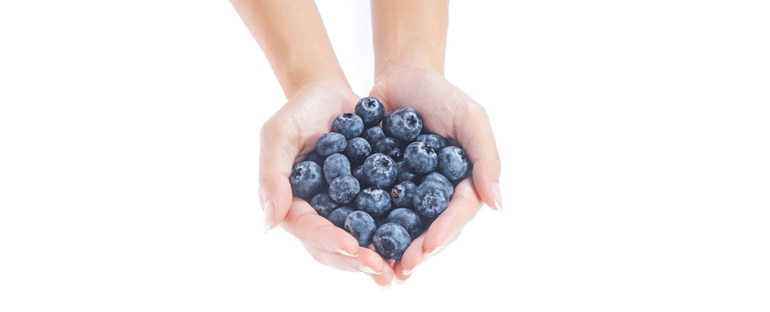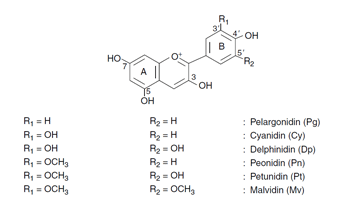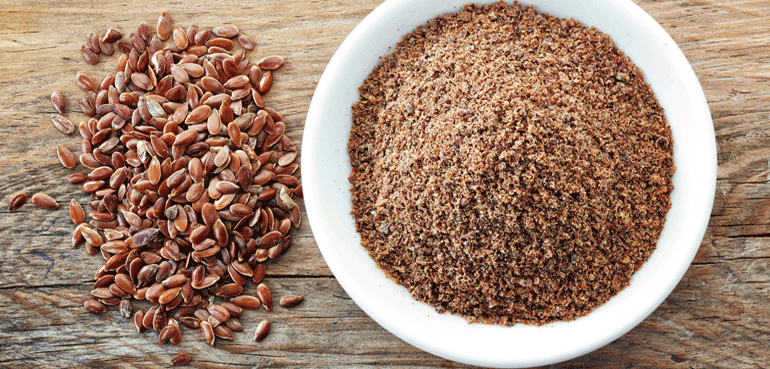
Functional foods: polyphenols in blueberries

What are the functional foods
The Institute of Food Technologists (IFT) defines functional foods in relation to their content of components with health benefits that go beyond the basic functions given by macro and micronutrients such as carbohydrates, proteins, fats, vitamins and minerals.
The European Commission, regarding functional foods, takes up the concept of a benefit on one or more target functions of the organism brought by a food or its component. This position goes beyond the indication of adequate levels of nutrients and focuses on an improvement in the state of health, well-being and the reduction of the risk of developing diseases [1].
The main substances that give “functional” characteristics to foods are: vitamins, omega-3 fatty acids, minerals, fibers, bacterial strains and polyphenols. The latter heterogeneous category of substances is part of the bioactive compounds of the diet; come from the plant world, with over 8,000 different chemical structures identified.
Polyphenols can be divided into different categories: flavonoids, phenolic acids, stilbenes, lignans.
The flavonoids in particular, are present in foliar epidermis, peel and pulp of fruits. An important group of these compounds are anthocyanins, responsible for the red, blue and purple coloring and with protective functions of the plant from radiation and attractiveness on pollinating insects
Food sources of anthocyanins are mainly represented by red fruits, red turnips, wild berries, especially blueberries and blackcurrants.
Properties of polyphenols
Several in vitro and in vivo studies indicate that polyphenols found in wild berries increase the antioxidant power in the human body, prevent the formation of free radicals, maintain the integrity of the DNA structure and inhibit the formation of pro-inflammatory cytokines [2]. These characteristics result in protective properties for the body such as oxidative stress* which is the basis of numerous pathological symptoms such as atherosclerosis, arthritis, some gastrointestinal problems, ischemia and reperfusion injury. Furthermore, the antiproliferative, anti-obesity and protective properties of these compounds are confirmed by more research [3].
Particular emphasis is given to the point that the intake of polyphenols during a meal containing fatty foods guarantees the protection from oxidative phenomena normally occurring during digestion and also provides for the removal of malondylaldehydes responsible for peroxidation of the circulating LDL lipoproteins [4]. Free radicals formed by lipid peroxidation can also affect other nutrients such as vitamins E and β-carotene, by oxidizing them. It is known that the oxidation of lipoproteins falls between the possible pathogenetic mechanisms of atherosclerosis and cardiovascular risk.
Bioavailability for a protective action
A crucial aspect to bear in mind when talking about the health properties of a substance regards the bioavailability, the ability of the bioactive compound to reach the bloodstream and expose its protective action in the target tissue. Absorption of anthocyanins occurs in the small intestine and partially also in the colon, thanks to the role of enzymes and intestinal bacteria that hydrolyze and make them assimilable by the enterocytes. The intestinal conditions play a central role in the absorption of these phyto-compounds and in the intake of drugs that alter the gastrointestinal functions as well as the conditions of dysbiosis can also significantly reduce the presence in the circulatory stream.
Studies in humans confirm the presence of anthocyanins in the blood after taking wild berries.
- The supplements cannot replace a diet rich in vegetables and in the variety of flavors and colors characteristic of different seasons.
- Accompany meals with vegetables and fruits rich in polyphenols to counteract the formation of ALEs (advanced lipid oxidation end-products).
- Enrich the dietary habits with functional foods of proven efficacy in connection of a balanced diet that increases their absorption and bioavailability.
- The antioxidant score performed in laboratory (in vitro) is not representative of the effective antioxidant protection in the human body (in vivo).
* Our body normally possesses both antioxidants and free radicals in a balance aimed at maintaining numerous metabolic functions. Oxidative stress is defined by excessive formation and / or insufficient removal of reactive oxygen species (ROS) or nitrogen (RNS).
![]() • Visit the Nutritional brand page to see the Lipinutragen functional foods: Nutra Pick, nectar of wild blueberry from the Modenese Apennines, and Nutra Nut, hazelnut cream made of organic cocoa with omega-3!
• Visit the Nutritional brand page to see the Lipinutragen functional foods: Nutra Pick, nectar of wild blueberry from the Modenese Apennines, and Nutra Nut, hazelnut cream made of organic cocoa with omega-3!
Bibliography
[1] https://ec.europa.eu/food/safety/labelling_nutrition/claims/health_claims_en
[2] Zhang H, et al. Dietary polyphenols, oxidative stress and antioxidant and anti-inflammatory effects. Curr Opin Food Sci. 2016; 8:33-42.
[3] Norbertoa S. et al. Blueberry anthocyanins in health promotion: A metabolic overview. Journal of Functional Foods. Volume 5, Issue 4, October 2013, Pages 1518-1528
[4] Kanner J, Gorelik S, Roman S, Kohen R. Protection by Polyphenols of Postprandial Human Plasma and LowDensity Lipoprotein Modification: The Stomach as a Bioreactor. Journal of Agricultural and Food Chemistry. 2012, dx.doi.org/10.1021/jf300193g
Article by:
Nutritionist Dr. Francesco Bonucci
The diet tips, written in the article, are not intended to be a substitute for a personal nutrition plan and are to be adapted to specific cases.
Photo: 123RF Archivio Fotografico | ©Poramet Thathong, 94795101, 2018-05-23 | ©polegaev, 71137565 , 2018-05-23
- On 24 May 2018





